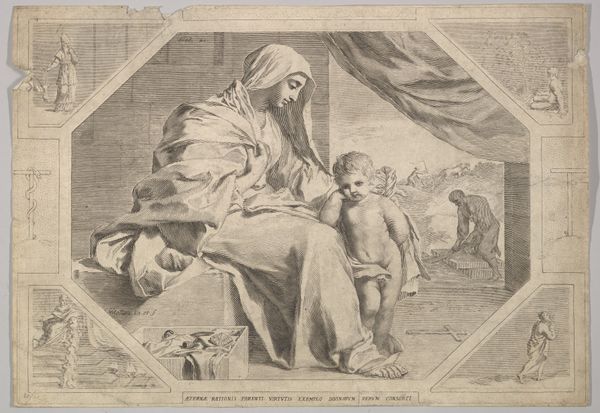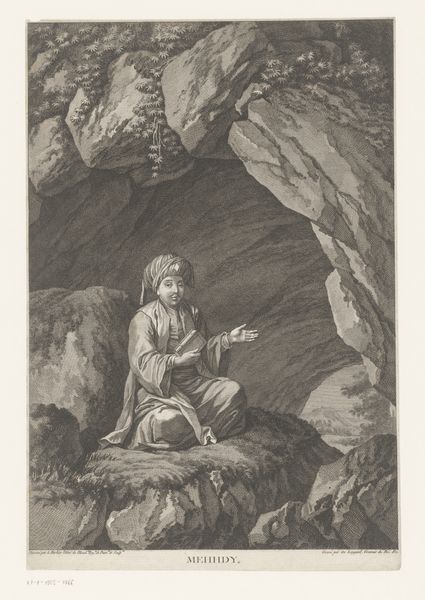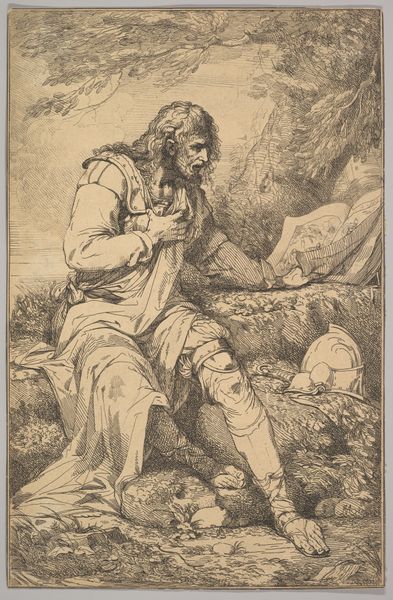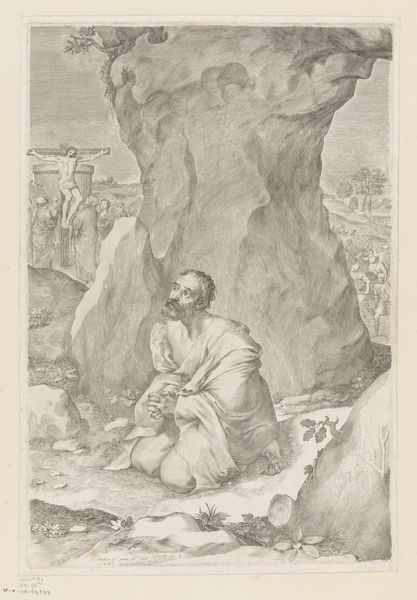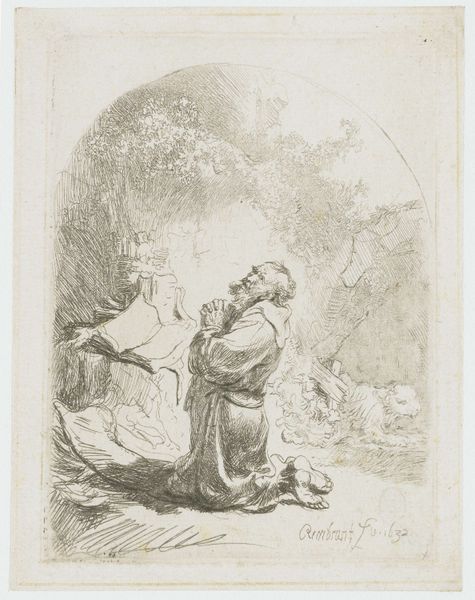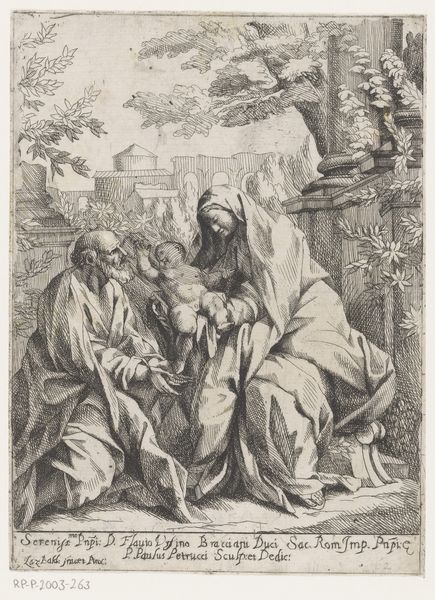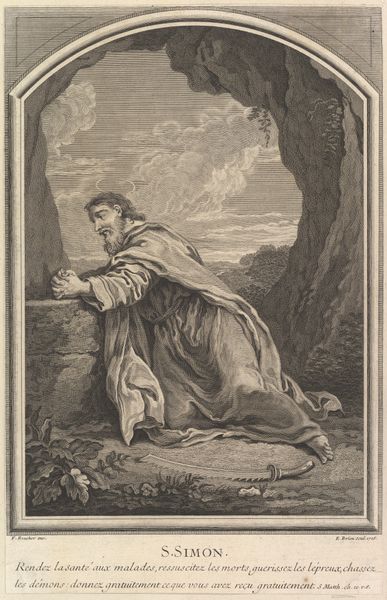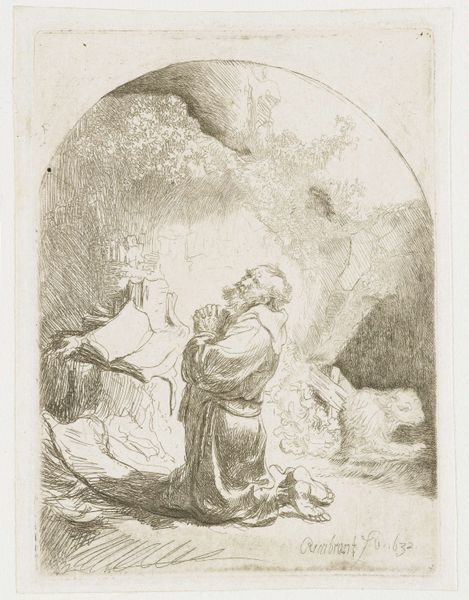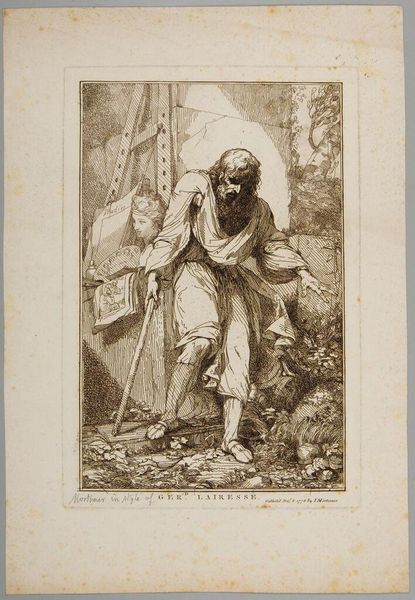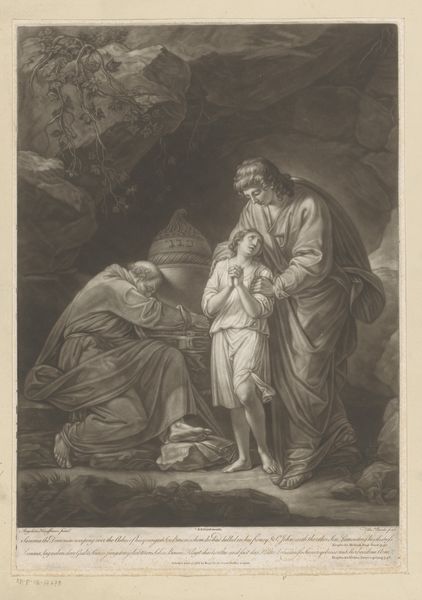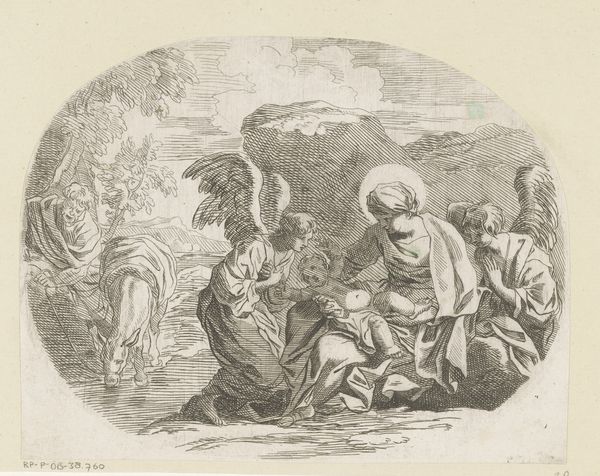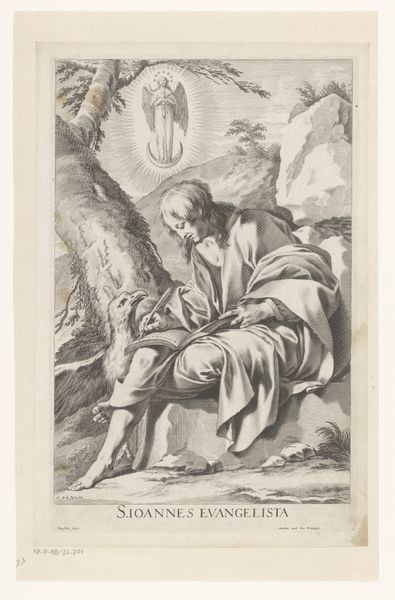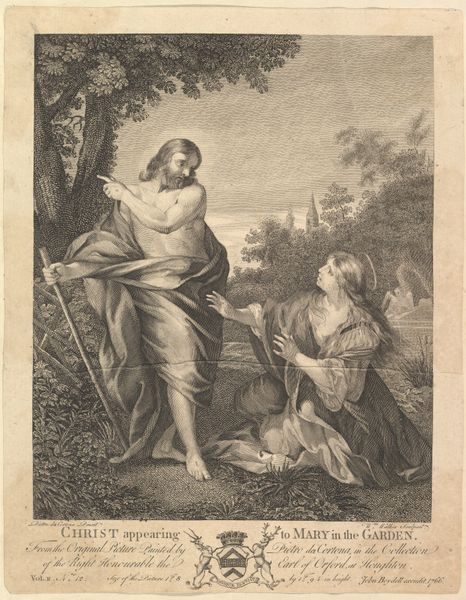
drawing, print, charcoal
#
drawing
# print
#
charcoal drawing
#
figuration
#
charcoal
#
history-painting
#
academic-art
#
charcoal
Dimensions: Diameter 41 in. (104.1 cm.) (sight)
Copyright: Public Domain
Curator: Immediately striking is the softness emanating from this large charcoal drawing. Editor: Indeed. Carl Müller's "Holy Family," completed in 1872, is an intriguing work from an artist trained in the rigors of Academic art. Notice the circular composition and the dramatic use of light and shadow. Curator: The use of charcoal really lends itself to that sfumato effect, softening the edges and creating an ethereal atmosphere. It is evident how this artistic choice guides our interpretation and imbues the artwork with religious emotion. Editor: Absolutely. "Holy Family," which we now see in the Metropolitan Museum of Art, fits squarely within the late nineteenth-century preoccupation with historical and religious themes. Consider its exhibition history: Did this drawing, and other prints from this artist, find homes in churches, private collections, or print shop windows? Curator: Irrespective of its context, the semiotic encoding of its subject is overt: The angel figure playing music indicates devotion; The thoughtful figure of Joseph and his outstretched hand gesture towards acceptance of heavenly decision. Even the formal construction leads the eye in particular circular ways, back again to Mother and Child. Editor: Certainly, formal aspects dictate to how the family is publicly portrayed. This drawing also tells us about changing socio-political needs and artistic conventions in the religious space of that period, specifically with the cult of motherhood that began during the time. Müller presents the sacred family in an idealistic and sentimental light. Curator: Perhaps we’re also seeing a reflection of Müller's deep engagement with the formal lessons of Renaissance masters like Leonardo and Raphael. One sees it especially in the pyramidal arrangement of figures and the calculated, graceful posing. Editor: Well said. Considering our discussion of this historical image and Müller's creative decisions, I'm prompted to examine other artworks dealing with the family throughout Western civilization. The use of art in service to ideology is evident, yet always in different cultural contexts. Curator: Yes, for me, the play of dark and light offers just as powerful of an insight. These formal dynamics create a contemplative tone that asks us to ponder themes of familial, filial, and divine love.
Comments
No comments
Be the first to comment and join the conversation on the ultimate creative platform.
